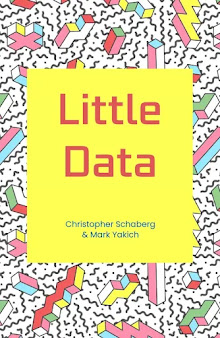Next year in a first-year seminar called "Thinking Space," I will likely assign the fiction piece that appeared in last week's New Yorker, Lorrie Moore's "Childcare."
"Childcare" takes place in a more or less contemporary moment, and is told from the first-person perspective of a college student looking for work—based on preliminary content alone, it already presents itself as an apt story for university students. The narrative is structured around restaurants, so that what seems at first to be straight storytelling gets curved by gastronomic curiosities; the story takes place in a small town, but it also a little looping network of food, always ready to go global. Near the beginning, the narrator mentions a meal called "Buddha’s Delight" available at "the Peking Café"; by the end of the story, we are at a Perkins with a "Bottomless Pot of Coffee." One character owns a French restaurant that is a present absence throughout the story: it is mentioned repeatedly but never really there. The story is not ostensibly about 'food' per se, (the narrator is not looking for work in a restaurant), and yet food keeps popping up, interrupting—or arguably forming—the narrative. This suggests a useful debate to have in class: what is the role of food in this story? This debate might also lead into a favorite assignment of mine, which is to have students write mini-reviews of local restaurants; this time around, I could have my students try to discover narratives that are lying dormant in their restaurants of choice, rather like the obverse of Moore's story, which finds restaurants within a broader fictive landscape.
It would be interesting to pair this story with an excerpt from Hemingway's A Moveable Feast, in part because of the shared preoccupations with eating out. Then, there is something to learn about environmental language in these two texts. A Moveable Feast begins: "Then there was the bad weather. It would come in one day when the fall was over." Moore's story starts out similarly: "The cold came late that fall, and the songbirds were caught off guard." I would ask my students how seasonal logic functions in each of these narratives. Is it just about setting, or does seasonal language do something specific to the setting? Perhaps it has something to do with what Heidegger called "worlding," in terms of how geophysical space is disclosed, both consciously opened up and necessarily delimited. I think of such environmental language as "spacing"—because in the midst of such description, the narrator becomes spaced out, and we (the readers) are not exactly in the realm of thought, yet not totally external to it, either. (This tangent could become a useful way to introduce Derrida's notion of "différance" as the spatialization of time and the temporization of space.)
Moore also plays with words in clever ways. For example, the narrator makes this observation concerning her college life: "In the corridors, students argued over Bach, Beck, Balkanization, bacterial warfare." This would be an excellent moment to talk not only about the spatial effects of alliteration, but also about intertextuality, perhaps bringing back Hemingway on Stein or Pound in A Moveable Feast. And then, we might compare literary and cultural allusions in prose with hypertextuality online: How is Moore's story aided by new media ways of thinking and reading? What happens when we use a Google search to help us map routes, make translations, and follow obscure references in a story? What is the threshold of searching in literature? (Ending on that note, in another post and in another class, I'd like to discuss the fiction piece in The New Yorker from a few weeks ago by Stephen O'Connor, "Ziggurat." This story involves an imaginative search through language and space, blending old mythologies with new media mysteries.)
skip to main |
skip to sidebar

An English professor's notes on airports, writing, & fly-fishing

- Christopher Schaberg
- Director of Public Scholarship Washington University in St. Louis












